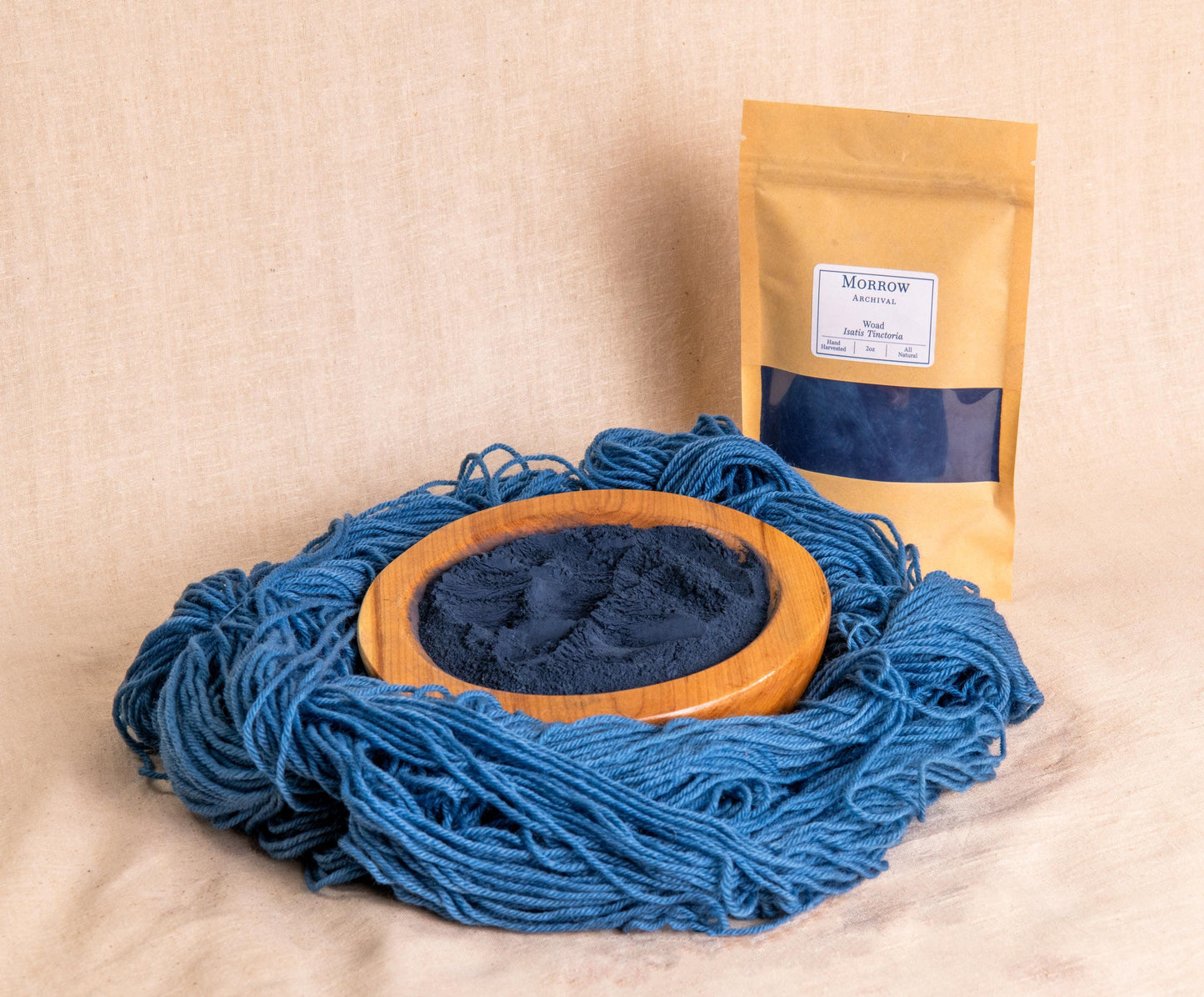Woad Dye
Woad Dye
Couldn't load pickup availability
Share

Description
Woad Dye is a historic natural colorant extracted from the leaves of Isatis tinctoria, a flowering plant cultivated across Europe and Central Asia for over two millennia. Like indigo, woad contains the blue pigment indigotin, but in lower concentrations, producing ethereal shades of dusty blue, slate, and soft sky tones. Woad is especially valued for its subtle, beautiful character and cultural significance in early European textile traditions. The dye requires a reduction vat for application, bonding to fibers through oxidation. It is gentle on delicate fibers and often chosen for historical reenactments and heritage crafts.
Recommended Use
Use at 5–10% WOF for medium to strong shades. Requires reduction (typically with soda ash and thiourea dioxide or other natural reducers) and an alkaline environment. Works best with repeated dips to build color and improve fastness. Ideal for protein and cellulose fibers including wool, silk, linen, and cotton. Can be used alone or layered with indigo for complex blues.
Historical Significance
Woad was the primary blue dye used throughout Europe before the widespread introduction of tropical indigo. It clothed Celtic warriors, illuminated medieval manuscripts, and was central to textile production in regions like France, Germany, and Britain. In England, it became a symbol of identity and resistance. The ancient process of extracting and fermenting woad leaves, though time-consuming, represents one of the earliest and most storied dye traditions in Western history.
Dye Details
Name: Indigotin from Isatis tinctoria
Origin: Europe or Central Asia (varies by batch)
Dye Type: Fermented botanical extract
Recommended Fibers: Wool, silk, linen, cotton, and blends
Lightfastness: Excellent on protein fibers, good on cellulose
Vat Ingredients:
Reducing agent (Thiourea Dioxide or Fermented Urine for traditionalists)
Alkaline agent (Soda Ash or Lime)
Warm water (120–140°F) for activation
Optional: Natural fermentation additives like wheat bran or madder root for heritage vats
Packaging
Available in resealable, eco-friendly kraft pouches with historical and modern vat instructions included.

